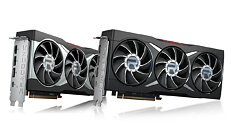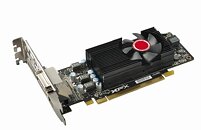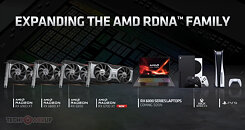
AMD Adds RDNA 4 Generation Navi 44 and MI300X1 GPUs to ROCm Software
AMD has quietly added some interesting codenames to its ROCm hardware support list. The biggest surprise is the appearance of "RDNA 4" and "Navi 44" codenames, hinting at a potential successor to the current RDNA 3 GPU architecture powering AMD's Radeon RX 7000 series graphics cards. The upcoming Radeon RX 8000 series could see Navi 44 SKU with a codename "gfx1200". While details are scarce, the inclusion of RDNA 4 and Navi 44 in the ROCm list suggests AMD is working on a new GPU microarchitecture that could bring significant performance and efficiency gains. While RDNA 4 may be destined for future Radeon gaming GPUs, in the data center GPU compute market, AMD is preparing a CDNA 4 based successors to the MI300 series. However, it appears that we haven't seen all the MI300 variants first. Equally intriguing is the "MI300X1" codename, which appears to reference an upcoming AI-focused accelerator from AMD.
While we wait for more information, we can't decipher whether the Navi 44 GPU SKU is for the high-end or low-end segment. If previous generations are for reference, then the Navi 44 SKU would target the low end of the GPU performance spectrum. The previous generation RDNA 3 had Navi 33 as an entry-level model, whereas the RDNA 2 had a Navi 24 SKU for entry-level GPUs. We have reported on RDNA 4 merely being a "bug correction" generation to fix the perf/Watt curve and offer better efficiency overall. What happens finally, we have to wait and see. AMD could announce more details in its upcoming Computex keynote.
While we wait for more information, we can't decipher whether the Navi 44 GPU SKU is for the high-end or low-end segment. If previous generations are for reference, then the Navi 44 SKU would target the low end of the GPU performance spectrum. The previous generation RDNA 3 had Navi 33 as an entry-level model, whereas the RDNA 2 had a Navi 24 SKU for entry-level GPUs. We have reported on RDNA 4 merely being a "bug correction" generation to fix the perf/Watt curve and offer better efficiency overall. What happens finally, we have to wait and see. AMD could announce more details in its upcoming Computex keynote.



















